The “Masterpieces of American Furniture from the Kaufman Collection, 1700–1830” is a permanent installation celebrating a generous promised gift to the National Gallery of Art (NGA). One of the largest and most refined assemblages of early American furniture and decorative arts in private hands, it was acquired, over the course of four decades, by George M. and Linda H. Kaufman of Norfolk, Virginia. In October 2010, it was promised to the National Gallery of Art.
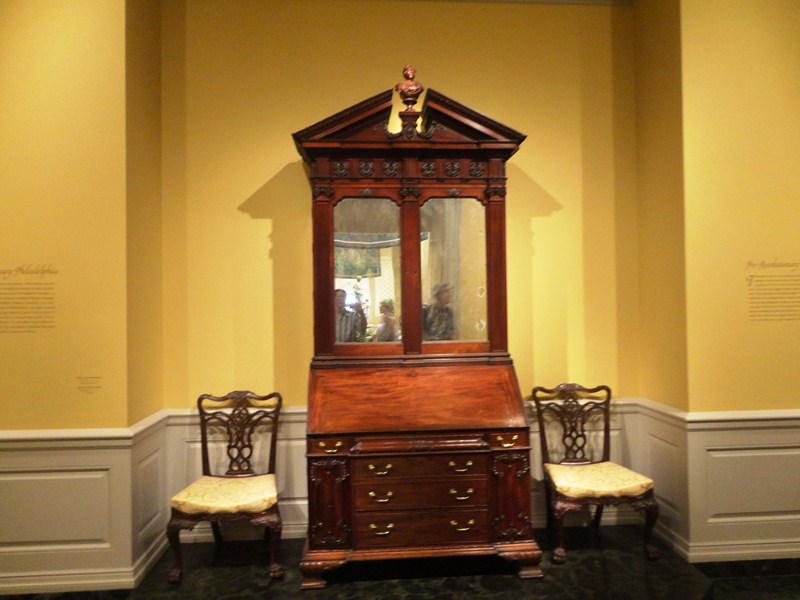
Philadelphia desk and bookcase, ca. 1755-65, with two heavily carved side chairs with hairy ball and claw feet. These high-style chairs were commissioned by John and Elizabeth Cadwalader, ca. 1770, for their home in Philadelphia.
In 1986, the NGA devoted ten rooms (more than 4,000 sq. ft., previously used for temporary exhibitions such as The Treasures of Tutankhamun and American Light: The Luminist Movement, 1850–1875) to an extensive exhibition based exclusively on the Stellar Collection of Early American Furniture, Dutch and American Paintings, and some 100,000 works on paper acquired, with great connoisseurship together, by the Kaufmans.
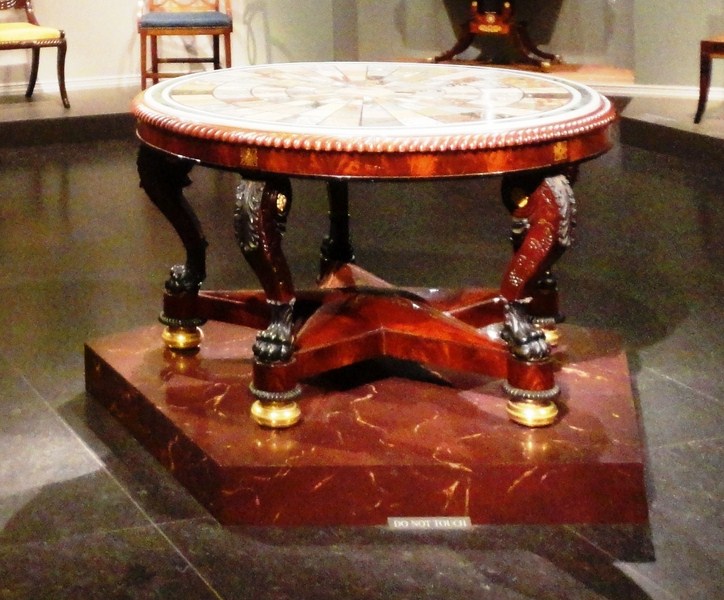
Impressive specimen-top center table, ca. 1827–1830; whose massive frame was crafted by Philadelphia furniture maker Anthony Quervelle (1789–1856).
The installation will, in addition, also include paintings by celebrated American artists in the Gallery’s collection such as Gilbert Stuart. The new installation, highlighting nearly 100 examples of early American furniture and decorative arts from this distinguished collection, includes some 40 French floral watercolors by Pierre Joseph Redouté plus American, Chinese, and French porcelains. In the emergent American Republic, furniture was an expression of personal and national identity and stylistic influences from Europe were tempered by a vigorous independence and sense of pragmatic functionalism.
The Kaufman gift, dramatically complementing the NGA’s fine holdings of European decorative arts (donated by the Widener family) and major Dutch paintings with equally important American works of art, offers visitors to the nation’s capital an unprecedented opportunity to view some of the finest furniture made by colonial and post-revolutionary American artisans.
The Kaufman Collection of American furniture includes more than 200 objects, many of which were featured in the 1986–1987 “American Furniture from the Kaufman Collection” Gallery exhibition and catalog. The addition of the Kaufman Collection significantly enhanced the NPG’s decorative arts holdings which, although the NGA doesn’t actively collect decorative arts, consists of some 515 objects, including European furniture; tapestries; enamels; ceramics from the 15th and 16th centuries; Medieval treasury objects; a fine selection of 18th-century French furniture; and a large group of Chinese porcelains ( primarily from the Qing Dynasty of the 17th to 19th centuries).
Furniture and decorative arts from the collection have been on loan or appeared in exhibitions at numerous museums throughout the United States such as the Metropolitan Museum of Art in New York City; the Philadelphia Museum of Art in Pennsylvania; the Museum of Fine Arts in Boston, Massachusetts; the Winterthur Museum, Garden and Library in Winterthur, Delaware; the Chrysler Museum of Art in Norfolk, Virginia; and the Smithsonian Institution and the U.S. State Department in Washington D.C.. A smaller selection of other decorative arts, including looking glasses, mirrors and clocks, were all in the 1986–1987 exhibition.
Among the items on display are:
- A Boston dressing table with exotic japanned designs (1700–1730)
- A chest-on-chest (1765–1790) with four sculptural carved shells and a history of ownership by Providence merchant John Brown
- A monumental Philadelphia desk-and-bookcase (c. 1765) considered by many scholars to be one of the greatest examples of American case furniture
- An ornately inlaid Federal sideboard (1793–1795) made by Williams and Deming, New York, for Oliver Wolcott, one of the signers of the Declaration of Independence.
- A tea table (1755–1765) with claw and ball feet and pierced talons attributed to John Townsend
- A singular inlaid Pembroke table (1780–1800) that descended in the Pringle family of Charleston.
- Numerous examples of seating furniture from distinguished sets, including two from the famous suite commissioned by Philadelphia merchant John Cadwalader and his wife Elizabeth Lloyd.
- A pair of painted and gilded porcelain “Old Paris” vases (c. 1820) with portraits of Presidents George Washington and John Adams
- Four rare pieces of Bonnin and Morris porcelain (1770–1772), America’s first porcelain manufactory, made in Philadelphia
- An Amelung glass tumbler with the American eagle, made for the inauguration of President George Washington in 1789.
- Gloucester Sunset (1880), one the most dramatic of a series of watercolors done by the Winslow Homer of sailboats on Gloucester Harbor and one of the artist’s most vibrant and luminous early watercolors.
- Two major watercolors by Childe Hassam, including Portrait of the Artist’s Wife (Leaning on a Garden Wall) (1890).
- More than 40 stunning watercolors of flowers, vegetables, and plants painted on vellum by French artist Pierre-Joseph Redouté (1759–1840), a favorite of Empress Josephine
- Important watercolors by Francis Augustus Silva, William Trost Richards, and others.
- The celebrated River View (1645), a painting by Salomon van Ruysdael (1600/03–1670), one of the finest and most atmospheric of this Dutch master’s majestic river scenes.
- A Pier in Dordrecht Harbor (early 1640s), a light-filled river scene by Aelbert Cuyp (1620–1691)
- An imposing landscape from the end of the 1640s by Jacob van Ruisdael (c. 1628/29–1682) that depicts a weathered brick bridge crossing an inland waterway near a large oak tree.
- A fanciful view of Amsterdam by Jan van der Heyden
- A representation of the marketplace in Haarlem by Gerrit Adriaensz Berckheyde (1638–1698).
- A trompe l’oeil depiction of a letter rack (1703) by Evert Collier.
- Bearded Man with a Beret (c. 1630), an expressive head study by Jan Lievens.
The Kaufman Collection, comprised of masterpieces from the major centers of furniture making (Boston, Salem, Newport, Providence, New York, Philadelphia, Baltimore and Charleston), includes work from many renowned cabinetmaker such as Thomas Affleck, John Goddard, Benjamin Randolph, John and Thomas Seymour, and John Townsend.
Spanning the years from 1690 to 1830, furniture in the Kaufman Collection includes objects in the William and Mary, Queen Anne, Chippendale, and Neo-Classical styles. Most of the 35 paintings in the gift are Dutch, which greatly enhance the Gallery’s collection (particularly landscapes) in terms of quality and significance, plus some from the American and French traditions.
The exhibit was divided into four high-ceilinged areas in a roughly chronological manner, with stylistic and regional subsections. At the entrance to the installation, from Sixth Street, is the first gallery which incorporated a variety of decorative arts. It features a monumental Philadelphia Rococo desk and bookcase, flanked by two robustly carved chairs; two recently acquired early looking glasses hung over a marble-topped table; a rare japanned dressing table; plus some of the earliest and most dazzling pieces, which date from around 1700 to 1760.
The second room is a select grouping of furniture that draw attention to the diverse regional characteristics that had developed, by the third quarter of the eighteenth century, in the colonial centers. Featured is a vigorously carved Philadelphia high chest placed opposite an elegant Newport high chest, while the center of the room is dominated by an extraordinary Providence chest-on-chest.
Two projecting cases that display four exceedingly rare American porcelains, made at the American China Manufactory founded by Gousse Bonnin and George Anthony Morris of Philadelphia, divide the Rococo from the Federal alongside an early glass tumbler crafted by John Frederick Amelung (active 1784 to about 1795). American portraits from the Gallery’s permanent collection hang throughout the space, including seven recently conserved paintings by Gilbert Stuart, seen with exceptional porcelains from the Kaufmans’ collection.
The Federal room is highlighted by a magnificently inlayed, 18th century New York mahogany sideboard made and labeled by cabinetmakers William Mills and Simeon Deming (active 1793–1798) and masterworks by renowned Boston furniture makers John and Thomas Seymour and Duncan Phyfe.
The fourth room, a striking finale to the installation, features Empire Style objects such as one of the finest specimen marble-top tables, installed on a faux-marble plinth in the center of the room. Ornately painted and archeologically inspired furniture, popular during the first quarter of the nineteenth century, is epitomized by the scrolled Grecian couch attributed to John and Hugh Finlay of Baltimore. Sixteen botanical watercolors by Pierre Joseph Redouté (1759–1840), contributing to the grandeur of this gallery, are double-hung on either side of a pair of exquisite New York girandole mirrors.
The Kaufman Collection – Masterpieces of American Furniture, 1700–1830: G/F West Building, National Gallery of Art Fourth Street and Constitution Avenue NW. Tel: 202-737-4215. Website: www.nga.gov. Admission is free.

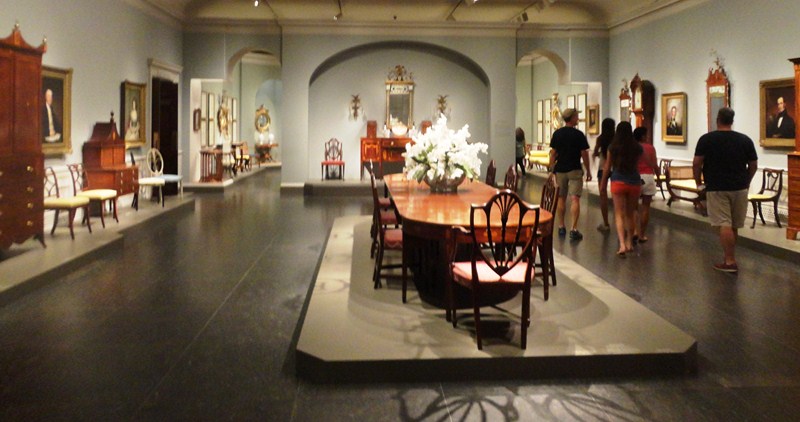
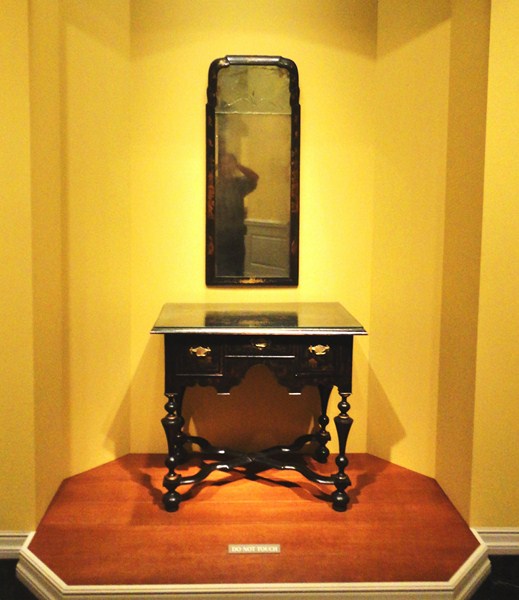
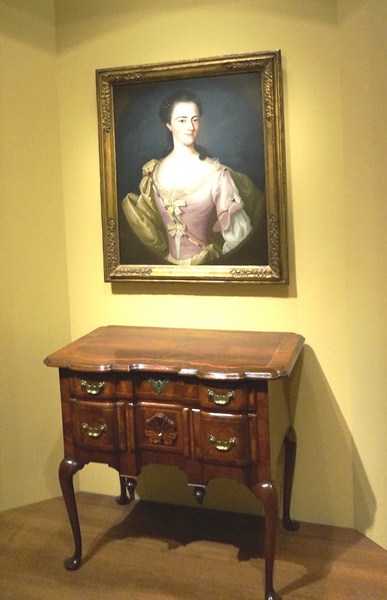
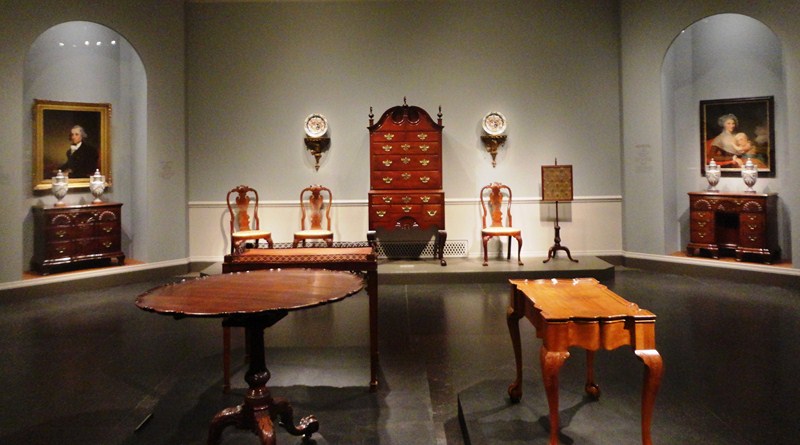
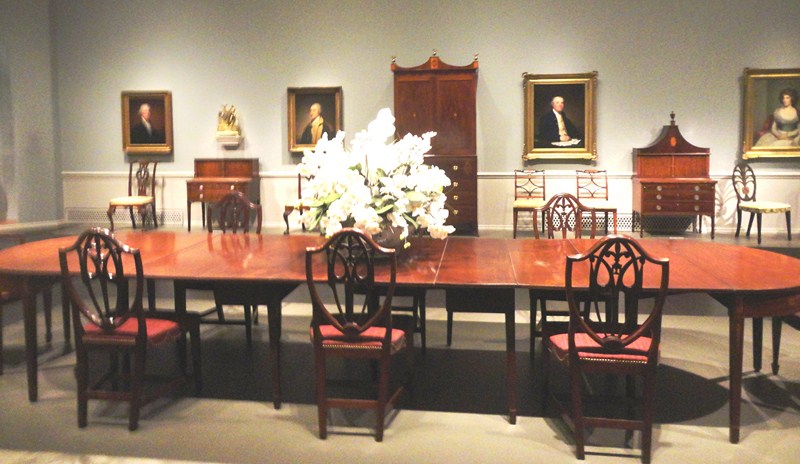
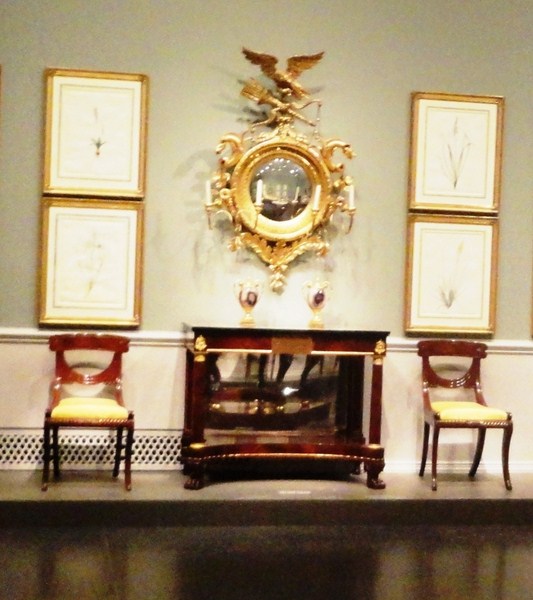
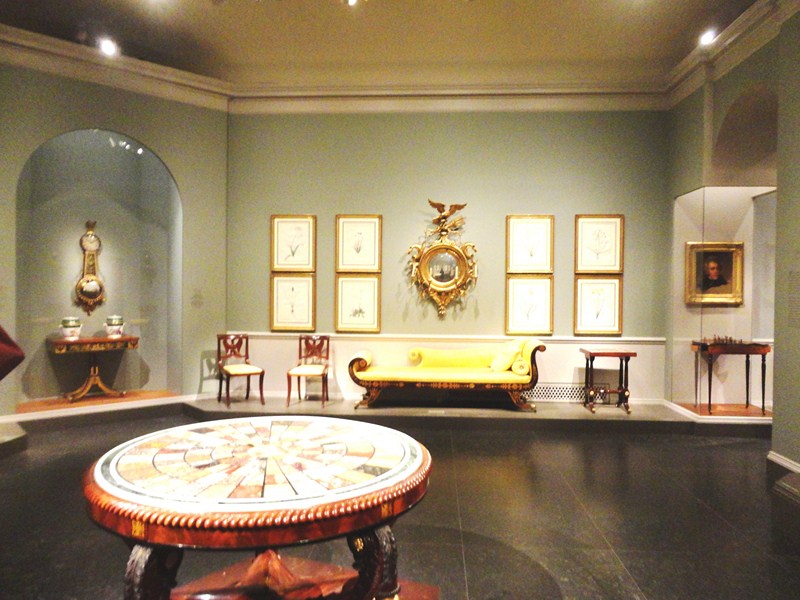
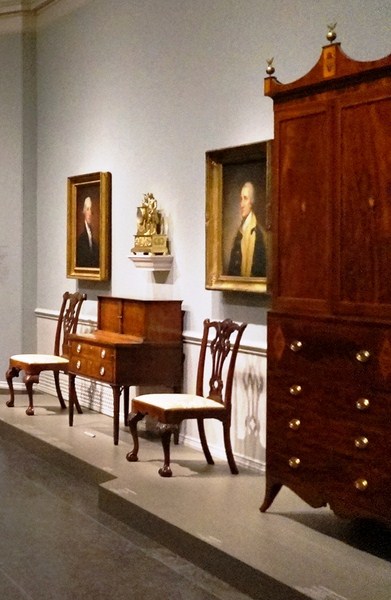
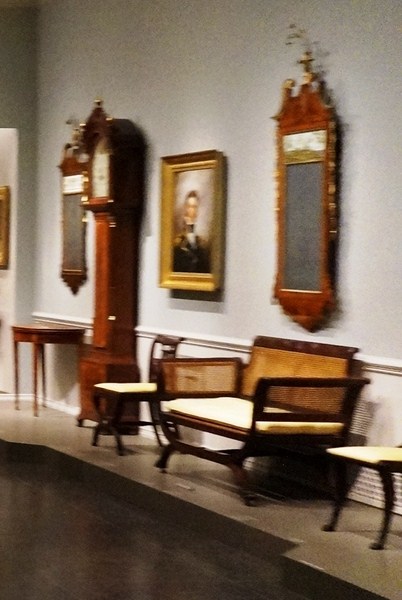
Pingback: My Homepage